It was only a matter of time before I wrote a post about my beloved Addo. While I was studying in Port Elizabeth I tried to spend any free moments, moments not spent peering down a microscope or scribbling a report, exploring the wonders of the Addo Elephant National Park. I was also lucky enough to spend time in the park, behind the scenes, assisting post grads with the field component of their research. This protected area is managed by the South African National Parks Board and is by far my favourite SANParks reserve. To me this park exposes magic at every turn. I have always entered through the Matyholweni Gate at the Colchester end of the park and once through felt as if a great weight had been lifted and a sense of peace restored. My first stop was always a chat with the gatekeeper, catching up on events that had occurred in my absence and getting the lowdown on where I might spot the more elusive creatures, and then came the mandatory toilet break (it’s a long drive, full of distractions, to the next pit stop).
My idiosyncratic bathroom ritual included teetering at the threshold and peering into the facility, checking the gloomy corners of the toilets, that the lights never seemed to properly reach, for lurking rain spiders. I always found myself faced with a frightening dilemma of entering one of the cubicles and having to shut the door knowing that there was a great possibility that there might be one smug spider chilling on the back of the door leaving me trapped as there is no way in hell that I would have touched that door again! I would be forced to escape out the teeny window (a feat in its own right) and into the dense thicket, undoubtedly teeming with more creepy crawlies… yes I have given this scenario a great deal of thought! I was once saved from this quandary by a sweet little old lady with nerves of steel who spotted me inching into the ablution facility while carefully scanning the thatched ceiling. She asked me if I would like her to inspect the cubicle and to my delight, subsequently declared it a spider-free zone.

You can forgive me for approaching the toilets with an air of trepidation after spotting these monstrous webs spanning the branches between trees and looking suspiciously like they had mummified a small buck!! Fuel for my already vivid imagination.
1. Every visit offers up something new, be it an experience or sighting. One of my most memorable experiences is my Mom’s terrifying introduction to the park. She and my Dad popped up from Cape Town for a visit and I insisted on sharing the Addo experience with them so got them up at 05:00 as I assured them that the gate opened at 06:00 and we needed to be in as early as possible to spot the caracal sauntering along Ngulube Loop. Well the gates only opened at 07:00 (I’ll never live that one down as shock horror, there was no time to make coffee!) so we spent a rather cold hour watching dozing vervet monkeys perched atop plumbago trying to catch the first warm rays of the rising sun.
Once in the park with the first few sightings under our belts, all was forgiven. That is until we encountered a herd of elephants on Harvey’s Loop. Unbeknown to us the herd was spread out in the thicket on both sides of the road with only about five plodding slowly along on the verge. So even though we were keeping our distance and giving what we thought was the herd space, the individuals that were now behind us were quite put out at the thought of being separated, broke through the vegetation and started charging down the road indignantly trumpeting. As we were now trapped between the two groups, I told Dad to just pull to the side of the road out of their way and remain very still. The rather large female responsible for all the trumpeting passed so close to our windows that Mom began a mantra of “I’m not making eye contact, I’m not making eye contact”, of course it didn’t help her nerves that I was sitting in the back announcing (in an awed stage whisper of course) that I could count its eye lashes. On subsequent visits, Mom was happy to view the elephants at a distance, as big grey blobs moving across the hills.

There are over 600 African elephants (Loxodonta africana) inhabiting Addo, a vast transformation from the initial 11 that were protected by the inception of the park.
I remember on one occasion when leaving the park, I happened upon a hunting black-headed heron so I pulled to the side of the road and switched off the car to watch the scenario unfold. Almost instantly its neck started the characteristic wobble of stalking mode and a few seconds later it unleashed a clinical and unforgiving strike at its prey. I was expecting a small snake, lizard or something equally skinny but was taken completely by surprise when it emerged out of the undergrowth with a large brown vlei rat in its bill! I watched in total disbelief as it promptly tossed it back and swallowed it whole.
Spending over an hour and a half marvelling at a snoring Roy and Nomad, two of the majestic male lions inhabiting the park, on Gorah Loop with no one else around is still one of my special memories as is the Fantasia-esque swimming elephants of Rooidam. Watching elephant herds gracefully striding across the plains and loudly congregating around Hapoor Dam on an oppressively hot summer’s day struck a chord deep within me. It dawned on me that I was watching these majestic animals, so engrained in Africa’s history, follow their ancient paths and time stood still, I could have been watching them move across the landscape centuries ago. The experience left me humbled and covered in goosebumps.In complete contrast to that stifling hot day, the torrential rain that I was once caught in while exploring one of the more quiet sections of the park was a memorable experience to say the least. I had to pull the car to the side of the road due to the rain completely obscuring my vision so there I sat, in my little Bantam while the roads around me were transformed into raging rivers that seemed at the time to mirror the intensity of the Zambezi.
2. Spending time in the park is an awakening for your senses. I love to take a time out and find a quiet spot (it doesn’t have to be regularly-visited waterhole or lookout point) to stop, switch off the engine and just allow my senses to be immersed in the wonders of the park. The breath-taking views of the Alexandria Dune Fields, the formidable roar of the lion, the call of the jackal through the heavy mist or the sweet smell of the fynbos (nature’s very own loo spray, although not always successful in disguising the overpowering smell of an elephant on musth). The sight of these gentle giants moving across the landscape and disappearing into the dense thicket, the only trace left behind being the memory and the powerful feeling of awe and captivation or the feeling of wonder when watching the little ones come to terms with the fact that they have four very disobedient legs to control. The feeling of ultimate euphoria when finally spotting your coveted species, be it the mighty elephant or the ambling dung beetle, the touch of the rough bark of the old trees shading the rest camps or the smell of the thicket after rain. The taste of one of the best Amarula Dom Pedros I’ve ever had, this while looking out over strutting kudu making their way down to the waterhole for their own drink.

Valli Moosa, the Kruger Big Tusker introduced into Addo to promote tusk presence in females, a feature lost as a result of limited genetic diversity.
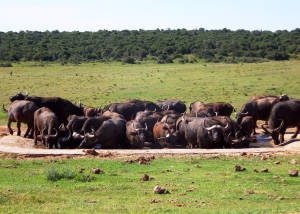
African buffalo (Syncerus caffer) traipsing out of the thicket for their mid-afternoon drink and wallow.

Cape weaver (Ploceus capensis), a common visitor hopping around in the spekboom (Portulacaria afra) fringing the Domkrag Dam lookout.
4. The backdrop.Being able to transition from the ocean, represented by the Alexandria Dune Field and the Bird and St. Croix Island Groups to the dusty Karoo by traversing the rolling and rugged Zuurberg mountains, the deep river valleys shrouded with thicket and the open plains teeming with zebra and red hartebeest. I find being able to shift between five South African biomes in one park remarkable making Addo truly unique and achieving a successful approach to holistic conservation. Google Maps pinned Addo with the comment, “vast area with hundreds of elephants” but it is so much more than that!
5. Affordability. It costs R 54 (R 216 for foreign visitors) for a day pass into this park, this fact alone is pretty impressive but when compared to the R 110 (R 110 for foreign visitors) entry fee for Cape Point, it becomes even more apparent that Addo really does provide value for money.
6. Photographic opportunities. This point is really an encompassing offshoot of points one, three and four but I’m going to include it anyway. It was incredibly difficult to whittle down and decide on the photos that I would publish with this post as I seem to have accumulated a vast collection of pictorial memories spanning my many visits.
7. The overall approach of the park to conservation and the manner in which it conveys this aspect to visitors. Education and conservation operate hand in hand and Addo has successfully achieved making the park appeal to all ages through not only the game viewing area but the Interactive Centre, the bird and underground hides and the PPC Discovery Trail. I relish the holistic approach that they have undertaken when tackling conservation. It is most definitely a park all South Africans can be proud of! Importance is bestowed on not only the prized Big Five but every single species contributing to the Addo ecosystem, including the charismatic Addo flightless dung beetle and the number of environments that constitute this great park. The buildings are aesthetically pleasing (unlike Cape Point) and always clean, members of staff are always friendly, helpful and informative (I especially enjoyed the combination of the sprigs of spekboom and toilet rolls used to decorate the toilets at Jack’s Picnic Site).
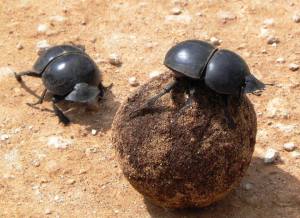
The all-important Addo flightless dung beetle (Circellium bacchus) is endemic to a small region of South Africa.
9. A place to escape to… my special retreat. I always returned from Addo feeling rejuvenated and ready to tackle the mountainous heap of paperwork crowding my desk. When it all got a bit much again, I would just pack a picnic and point the Bantam Addo-ward for a much needed time out.
10. I still haven’t seen it all, I haven’t even scratched the surface… not even a little bit! Check out this awesome SANParks promotional video about AddoExplore. Dream. Discover.


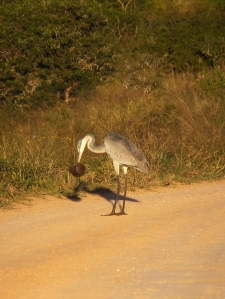


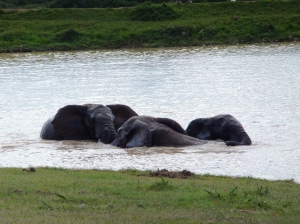



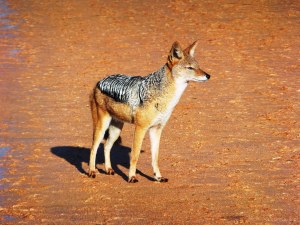
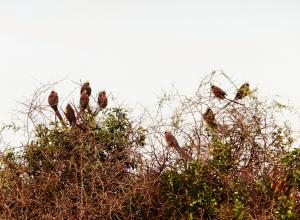


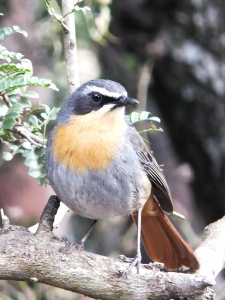

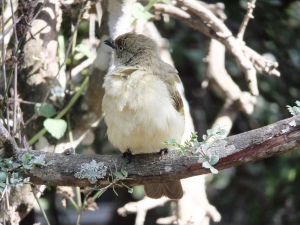
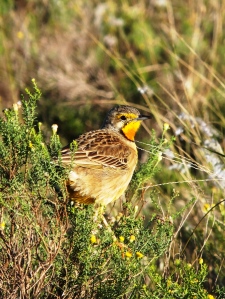
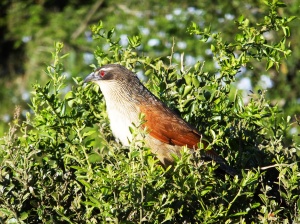
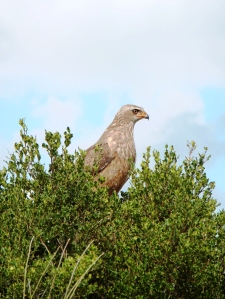


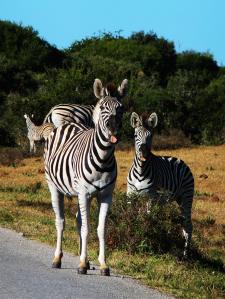
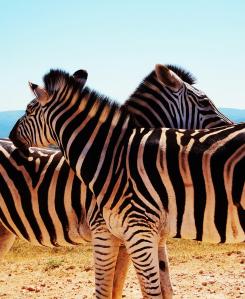






Hi Sally, have just come away from a visit to a little part of your heaven… completely transported into another world… WUNDERBAR!! I thoroughly enjoyed my trip. It also stirred some good memories of watching animals near waterholes in Etosha in Namibia… It was grandpa’s pension gift to us, we went for a trip to namibia and the highlight of the trip was a few days at Etosha. Sally I did enjoy the trip in addo… Keep it up. Pie xxx
Sent from Samsung tablet
LikeLiked by 1 person
Thanks Gran! 😊
LikeLike
Pingback: The “Elephant in the Room” in Marine Protected Areas: Problems of Locally Overabundant Species | Scientist in Limbo
Pingback: Bird Community Responses to Elephant-Induced Impacts on the Landscape | Scientist in Limbo
Pingback: Nomadic Conservation: A South African Filmmaker’s Journey across the Seas to Inspire a Conservation Movement | Scientist in Limbo